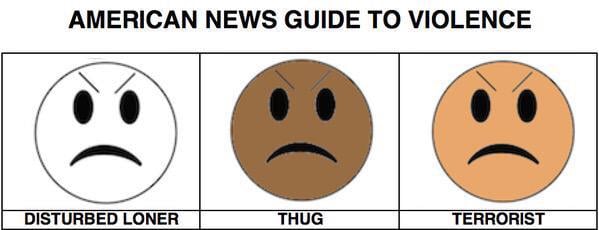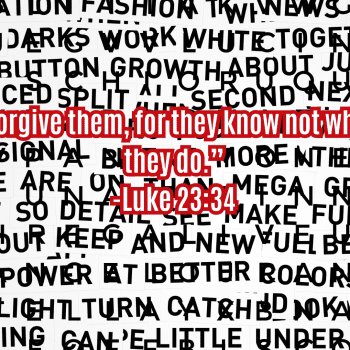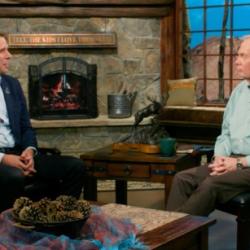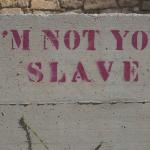“Why is it men who commit mass shootings?”
That’s an academic discussion by Tristan Bridges and Tara Leigh Tober, and it explores academic theories for this pattern — such as that “when an identity someone cares about is called into question, they are likely to react by over-demonstrating qualities associated with that identity.” Many mass shooters seem to be responding to a sense of “masculinity threats,” and Bridges and Tober examine research that shows such threats often prompt men immersed in American notions of masculinity to respond by becoming: “more supportive of violence, less likely to identify sexual coercion, [and] more likely to support statements about the inherent superiority of males.”
All of which seems to suggest that the prevailing idea of masculinity in our culture is deeply, deeply effed up.*
But the stark obviousness of the pattern is something that should be noticed and discussed by everyone, including those of us who aren’t academic sociologists. The overwhelming majority of mass shootings are committed by men. That fact is so obvious that it goes without saying — and thus without exploring.
When we first hear news of the latest horrific spree of lethal violence we all know that the subsequent narrative of the story will be shaped and altered to fit the usual tropes determined by the race, ethnicity and ideology of the shooter. This grimly funny graphic that circulated on Twitter summarizes that depressing ritual:
If the killer is a white man, he will later be described as an aberrant, mentally disturbed exception to whiteness. If the killer turns out to be a black man, he will later be portrayed as an example of the inherent menace of blackness. If the killer turns out to be a Muslim, or to have a foreign-sounding name, then he will be portrayed as evidence of the terrorist menace that we’re all supposed to support by being sufficiently terrified. We all know that drill and much has been written, properly, about the flagrant, stupid, evil racism at work in that post-violence ritual.
But far less has been said about the larger pattern — the masculinity of such violence. We all see this and know this. We hear of the latest spree-killing and we anxiously wait to learn the race/ethnicity/ideology of the shooter and thus to learn which of the stale, inevitable, politicized narratives we’ll be forced to relive in the coming days, which of the exhausted arguments we’ll be forced to review and repeat.
Yet we never bother to wonder if the eventual suspect/shooter to be identified will turn out to be a woman. We know it won’t. This is a thing that men do.
Yes, yes, there are exceptions. We remember Sylvia Seegrist (who attended my alma mater) and the school shooting from “I Don’t Like Mondays.” But those exceptions are exceptional — extremely so and extremely rare as Bridges and Tober discuss:
Our map charts mass shootings with three or more victims over roughly five decades, since 1966. The dataset takes us through the Chattanooga, Tennessee shooting, which brought 2015 to 42 mass shootings (as of July). The dataset is composed of 216 separate incidents only five of which were committed by lone woman shooters.
This is a thing that men do.
The pattern is so utterly clear that we could almost expect Franklin Graham to start shrieking about banning male immigration and hinting that we need internment camps for men:
Four innocent [Americans] killed and three others wounded … yesterday … all by a radical [male] whose family was allowed to immigrate to this country from [a patriarchal country]. We are under attack by [males] at home and abroad. We should stop all immigration of [men] to the U.S. until this threat with [masculinity] has been settled. Every [man] that comes into this country has the potential to be radicalized. … During World War 2, we didn’t allow Japanese to immigrate to America, nor did we allow Germans. Why are we allowing [men] now? Do you agree? Let your Congressman know that we’ve got to put a stop to this and close the flood gates.
Graham’s nonsense wouldn’t make any more sense applied to men than it does applied to Muslims. His hysteria and incontinent bigotry — or his cynical attempt to fund-raise by appealing to such base fears — is patently unjust and brutishly stupid. But Graham’s hateful brain-fart was his attempt to participate in a larger, sometimes sensible, ongoing conversation about religious violence that highlights the utter lack of any such parallel conversation about masculine violence.
Many would agree that something has gone horribly wrong in the forms of religion that have curdled into support for Islamic terrorism — or for Christian terrorism (the Klan has killed more Americans than al-Qaida and Daesh combined). Some, like Graham or Pamela Geller, agree with the claims of the terrorists themselves — that such violence is intrinsic to their religion and represents the purest, truest form of their faith. But that claim is difficult to reconcile with the fact that the overwhelming majority of adherents of those faiths reject this violence.**
Likewise, it’s also true that the overwhelming majority of men do not become mass shooters. #NotAllMen is the first refuge of scoundrels desperate to change the subject. But while it is usually a beside-the-point attempt to squirm away from whatever uncomfortable truth is being discussed, and it almost never means what those trumpeting it seem to think it means, it’s still basically true. What that suggests, I think, is that some forms of masculinity are toxic and violent, but maleness does not have to take such forms.
Bridges and Tober seem to agree with this hope, interpreting male violence as, partly, an expression of “aggrieved entitlement,” or — in less academic language — “being pissed off about an inability to cash in on privileges previous generations of men received without question”:
Mass shootings can be understood as an extremely violent example of a more general issue regarding changes in relations between men and women and historical transformations in gender, race, and class inequality.
Thus their conclusion, which is food for thought:
Mass shootings are a pressing issue in the United States. And gun control is an important part of this problem. But, when we focus only on the guns, we sometimes gloss over an important fact: mass shootings are also enactments of masculinity. And they will continue to occur when this fact is combined with a sense among some men that male privilege is a birthright – and one that many feel unjustly denied.
– – – – – – – – – – – –
* For an extravagant, explicit illustration of this dynamic of “when an identity someone cares about is called into question, they are likely to react by over-demonstrating qualities associated with that identity,” watch the dash-cam video of the Texas police officer arresting Sandra Bland. This is a white man desperately feeling a need to over-demonstrate the qualities he associates with whiteness and maleness. Those qualities turn out to be brutish, nasty, ignorant and violent.
My question here is whether his association of those qualities with those identities was accurate or necessary. My sense is, bleakly and bluntly, that this association was descriptively accurate. But I also believe, or at least hope, that such an association of those qualities with those identities is not necessarily normative. Just think of someone white and male who demonstrates a wholly different set of qualities — like, for example, Atticus Finch. Wait … bad example …
** The parallels between the violence of deformed religion and the violence of deformed masculinity are not comprehensive. One major difference is this: The majority of the victims of Islamic religious violence are Muslims, just as the majority of victims of the Christian terrorism of the Klan and of the Crusades were Christians. But the majority of victims of masculine violence are not other men. See, for example, today’s edition of your local paper, in the crime pages of the B section of Local News.
















